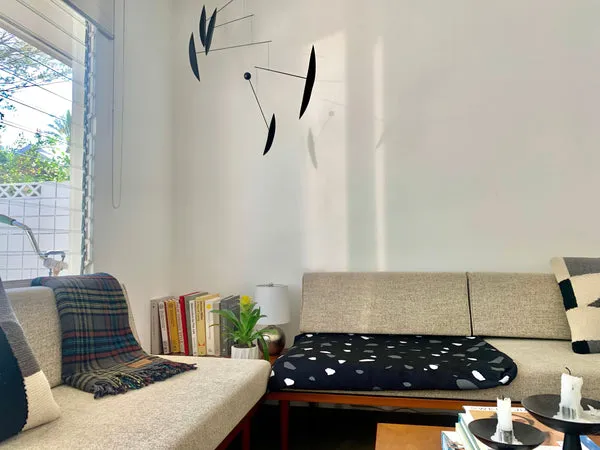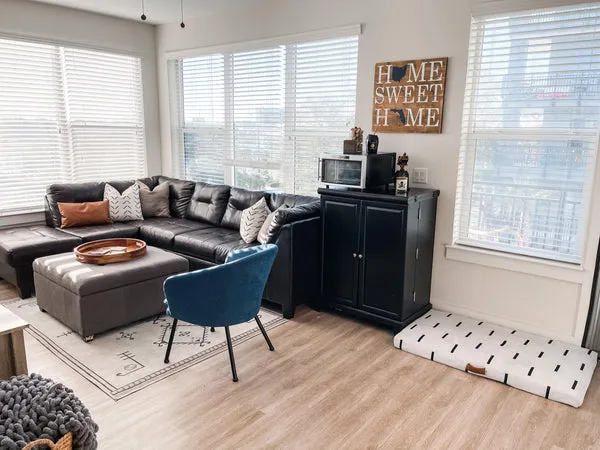For many dog owners, the couch presents a classic dilemma: a beloved pet eager for comfort versus the desire to keep furniture clean and pristine. While some welcome their furry friends onto the sofa, establishing clear boundaries is crucial for others. Whether you’re welcoming a new puppy or looking to change an older dog’s habits, effectively training your dog to stay off the couch is an achievable goal. This process, often taking just a few days of consistent effort, is an essential part of shaping your dog’s behavior and ensuring harmony in your home. Below, we’ll explore proven methods to help your canine companion understand and respect couch rules for good.
Methods for Training Your Dog to Stay Off the Couch
The Block Method
One of the simplest and most immediate ways to prevent your dog from getting on the couch is through physical obstruction. When you are home, you can simply occupy the space yourself, leaving no room for your pup to jump up. This method relies on the principle that if there’s no available space, your dog won’t feel the urge to get on the furniture.
For times when you’re not actively on the couch, utilize physical barriers to block access. This can involve baby gates, stacks of pillows, or even rearranging furniture like ottomans to create a blockade in a hallway leading to the sofa. These deterrents are particularly effective for dogs with established habits of jumping on the sofa and serve as an excellent first step in setting new boundaries.
 A decorative pet gate blocking access to a modern living room couch
A decorative pet gate blocking access to a modern living room couch
The “Off” and “Up” Command Method
While blocking access is practical, it’s not a comprehensive training solution. A more direct approach involves teaching your dog specific commands. The “Off” command is fundamental for Training Your Dog To Stay Off The Couch.
To teach the “Off” command, sit in your living room and observe your dog. The moment they attempt to hop onto the furniture, approach them with a treat or their favorite toy. Clearly say “Off” to indicate that you want them to get down. Use the treat or toy to lure them gently off the couch and onto the floor. Consistent repetition and rewarding their compliance will help your dog associate the word “Off” with leaving the furniture.
 A small dog being lured off a light-colored couch with a treat
A small dog being lured off a light-colored couch with a treat
For owners who occasionally want their dogs to join them, the “Up” command can be introduced. This teaches your dog that couch access is by invitation only. You can place a designated blanket or a pet bed cover on the couch, signifying an approved spot. To teach “Up,” excitedly pat the desired area on the couch and use a treat or toy to lure your dog. If needed, a gentle pull on a leash can guide them. Reward them generously when they successfully get “Up.” This method reinforces that all furniture interactions require your explicit permission.
 A black and white patterned dog bed cover placed on a couch, inviting a dog to sit
A black and white patterned dog bed cover placed on a couch, inviting a dog to sit
The “Spot” or “Place” Method
Offering your dog an appealing alternative is another effective strategy for training your dog to stay off the couch. Designate a special “spot” or “place” for them, such as a comfortable dog bed strategically positioned in the same room as the couch. This provides them with their own inviting space.
Introduce the “Place” or “Bed” command to encourage them to go to their designated area. When your dog approaches the couch, redirect them by saying “Place” and luring them towards their bed with small treats. For more stubborn dogs, a gentle nudge with a leash can help guide them. As your dog begins to understand and respond to the command, gradually reduce the use of treats, replacing them with verbal praise and affection. The ultimate goal is to reinforce positive behavior: rewarding them for choosing their bed over the sofa, thereby establishing the couch as an off-limits zone. Modern dog beds often blend seamlessly with home décor, making this a stylish and practical solution.
 A comfortable white dog bed positioned next to a modern sofa in a living room
A comfortable white dog bed positioned next to a modern sofa in a living room
What About When You’re Not Home?
Even a well-trained dog might revert to old habits when unsupervised. Many owners have witnessed their pets sneaking onto the sofa via security cameras the moment they leave. To prevent this, continue to block access to the couch when you’re away, using baby gates or other physical barriers.
Crate training is another highly beneficial tool for managing your dog’s behavior when you’re not home, preventing not only couch surfing but also other destructive behaviors. Learning how long can dogs stay in a crate and mastering the technique can provide a safe, secure space for your dog. It’s important to make the crate a positive experience, often by including their favorite bed or toys. If you find that my dog escapes his crate, re-evaluate the crate’s size, security, and your training approach. If crating isn’t an option, consider using dog-safe deterrents designed to make the couch unappealing.
 A person rewarding a dog with a treat for staying on its bed instead of the couch
A person rewarding a dog with a treat for staying on its bed instead of the couch
Key Principles for Success in Dog Training
Successfully training your dog to stay off the couch, or any other furniture, hinges on a few core principles. Consistency is paramount: all household members must be on the same page regarding the rules and commands, ensuring your dog receives clear and unambiguous signals. Patience is also vital, as building new habits takes time and repetition. Always reinforce desired behaviors with positive praise, treats, or affection, making the training process enjoyable for your pet. By consistently applying these methods and maintaining clear boundaries, you can effectively teach your dog appropriate furniture etiquette and enjoy a harmonious home environment.
